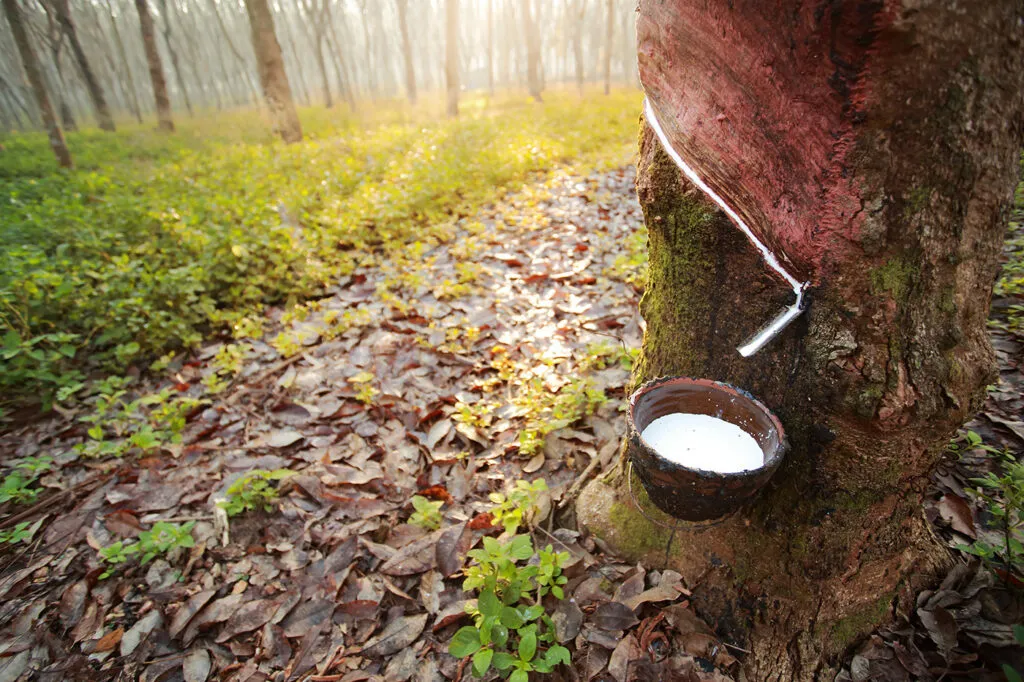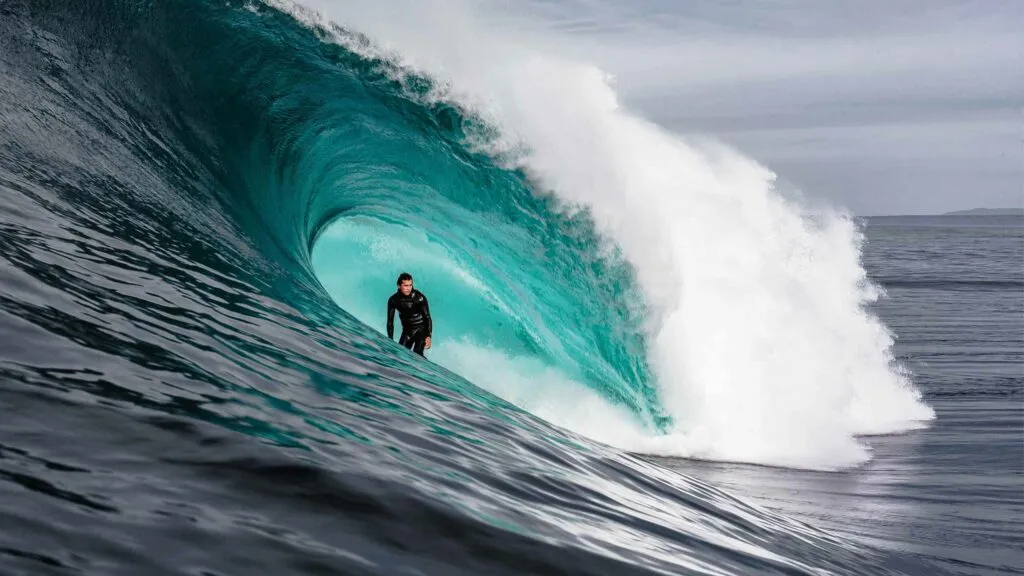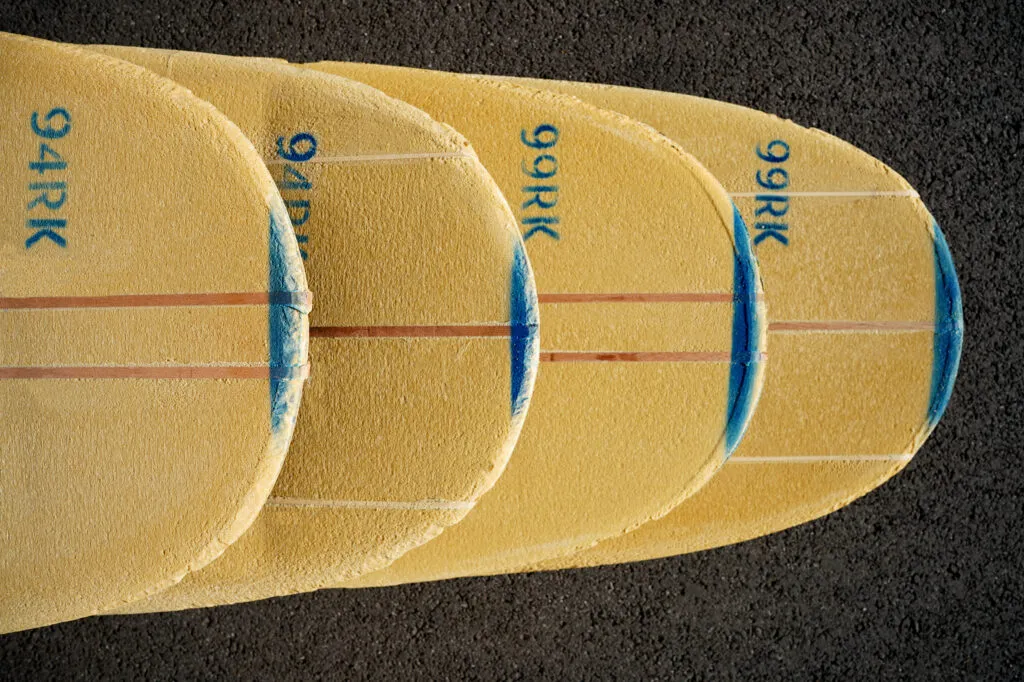This is part one of an ongoing series looking at how to ask the right questions of your surf brands and understand how marketing isn’t always what it seems. Shock horror, right? Brands want to sell you their products and might get a little excited talking up the good bits and omitting the less palatable.
After all, there’s nothing more attractive now than the correctly priced product, which also sits on the ‘sustainable’ side of the eco fence. Right now, it pays for companies to make you aware they are conscious that the world’s on fire, and their particular product is also cognisant of the need to manufacture with the planet in mind.
In this series, we will examine the relationship between surfers and the environment in three key areas: surfboards, wetsuits and apparel and help you understand who is paying lip service to green marketing and who is probably on the right track. Having been both sides of the coin, as a taker of the advertising dollar and a brand owner, I’d say the situation is mixed. Some parts of the market are trying their hardest to do the right thing, a small amount is heavily scrutinised and have to be reasonably honest, whilst on the other side is a vast savanna of unregulated eco babble vocabulary with no checks or balances. *As a note the EU is trying to regulate the environmental word salads parroted by a lot of brands but it is early days.
Finally, we aren’t in the business of rubbishing individual brands as running any business is tough, but we’ll definitely be highlighting the companies doing it well.

What can we do as surf consumers?
So what should you do as an individual? Do you have to become an expert in each industry to sort the ocean-bound plastic from the circular agri-waste polymers? In some ways, yes, you do. Sorry about that. Until legislation and effective regulation catch up with market forces, you are the force by which brands are held to account for what they say and do.
Becoming aware of the double-speak and what is omitted from marketing allows you to lift the veil and understand how this imperfect world gets by. In retail, there’s often an idea that consumers are savvy and you can’t get anything past them. And that’s true for a minority, but the unvarnished truth is most people don’t have the time or inclination to learn it all, so they trust the marketing – as they should – after all, companies can’t just make things up, can they? And that’s where we learn it’s not all as it should be out there in product marketing land. There’s a lot of half-truths and obfuscation, and that’s what we are here to clear-up.
Where do we want to be?
Buying nothing at all is the only way we shop sustainably, but failing that, let’s try and help you shop better. Ideally, we as consumers are looking for circular products that people are paid a living wage to produce, made from non-toxic materials, which can be remade into as-close-as-dammit versions of themselves. We have extracted enough resources from the planet for several lifetimes already, but what we are really bad at doing is reusing them in an efficient manner.
In this crucial aspect surfing has a lot to do. If you imagine the perfect circular boardshorts or wetsuits, these items would be easily reground or chemically separated and made into new versions of themselves as the gold standard. We are miles away from that.

Wetsuits
Most wetsuits are constructed from numerous materials bonded together and they aren’t designed to be separated. Creating a durable wetsuit is key, not one you can take apart and easily recycle. For example, you’ll have a polyester stuck to a neoprene, which is, in turn, made from a mixture of materials, making end-of-life recycling tough. Afterlife here means a step down so they become something else entirely, be that bags or ground into playgrounds. This goes for most complicated products that are designed for hard use, such as shoes, bags, etc.
So after that extensive caveat, what’s good in wetsuit production? We’ll be diving into this topic in depth, but here’s some quick takeaways:
The good:
Yulex and the other natural materials like Organiprene which don’t use oil or limestone. Patagonia was the first to go 100% neoprene free and brands like Finisterre quickly followed suit. More recently brands like Oxbow have committed to only using yulex.
The bad:
Normal neoprene is made from chloroprene predominantly in Denka’s factory in Lousinia in Cancer Alley. The air quality here causes cancer to the local residents as detailed in the forthcoming doc the Big Sea.
The greenwash:
Limestone neoprene was the poster child of wetsuit sustainability but is now widely debunked as an eco alternative. It is still mostly made in Deka’s other factory, only this time in Japan, where they handily don’t measure the air quality.
Apparel
It’s a lot easier to be green in clothing, think single materials and easily recycled items. It sounds simple enough, but the reality of most manufacturing is pretty brutal with widespread malpractice and a reliance on cheap polyester and inorganic cotton.
The good
Organic materials, single and easily recycled polymers and a whole host of exciting new waste-to-product materials are coming onstream. Paying a living wage to your workers and generally not abusing them.
The bad
Fast fashion as surfwear made from cheap materials and stitched together in a distant factory with opaque supply chains. This is most brands still, unfortunately. Price is key here and a lot of companies operate a policy of not asking too many questions.
The greenwash
Loads coming on this soon, but recycled plastics? It sounds so good until you realise that they are making bottles to immediately recycle them. Similarly, ocean-bound plastics are plastics that ‘could’ be discarded close to the sea, not plastic that actually was in the water.

Surfboards
The elephant in the boardroom is that no surfboard is even close to being eco-friendly if it isn’t made from wood. But things are improving.
The good
As we already mentioned, wooden surfboards are the most sustainable method see, Lignum, Porthtowan’s Otter Surfboards and Varuna. Also in Cornwall, PredN are making strides in eco production and one of our favourites, Polyola make recyclable foam and now a bio-resin.
The bad
Cheap as chips popups and disposable bodyboards that have flooded the market and are often poor quality and difficult to repair. And we’d include some well-known brands under that umbrella.
The greenwash
More of a general point that some shapers will make the case that the surf industry is too small to bother. Utilising 2023’s favourite word, whataboutism, is the practice of pointing out all the other bad things going on as an excuse for not changing your own behaviour or asking difficult questions. No one is perfect, but that’s no excuse for not giving the planet-friendly alternatives a try.

Want to get your hands on a fresh copy of #265? Wavelength gets delivered straight to your door either as a single edition or annual subscription.
